Web3, the Internet of tomorrow
"The Web3 is this new Internet owned by users and contributors, made possible by the means of tokens".
From now on, it is possible to build a new Facebook/Twitter, serving as runtime protocols and using this new train of thought that aims to increase user control over the networks, rather than corporate control.
Chris Dixon, crypto entrepreneur and investor

If you had to explain in a few words the difference between yesterday's web, today's web, and tomorrow's web, what would your answer be?
Web 3.0 (Web3) is changing the way we use the internet and all the services associated with it: web browsers, file sharing, streaming, apps, databases, etc.
While some people have not waited to welcome these new technologies, others are apprehensive, or even refuse, to accept the Internet of tomorrow, Internet of our future.
But why should we be interested? Why should we follow this umpteenth movement including abstract concepts such as blockchain, nfts, crypto-currency? Why not just stick with our current system?
This is what we will see in this new article dedicated to the Web of tomorrow, the Web3.

What is Web 3?
Also called the decentralized Internet, Web3 is nothing more nor less than a new act, a new page turning in the history of the Internet.
Today, our data is mainly transmitted and managed by big companies, especially those related to Big Data and Big Pharma.
To name a few:
Apple,
Google,
Spotify,
Facebook,
Instagram,
Netflix.
In this decentralized perspective, data is now destined to pass directly between users. It is therefore a new era of the web that is opening up, one in which we feel the need to take ownership of our data again.
To better understand the changes this brings, it is necessary to go back to what it was before.
Understanding Web1 and Web2
Blockchain, DAO, NFT, Metavers... was it better before?
Logic says that if there is a Web3, we should find earlier versions. The decentralized Internet is in fact an evolution of Web1 and Web2.
But then, let's ask ourselves again: was it better before? It would be counterproductive to answer yes or no (make your own opinion).
Just keep in mind that it is always difficult for some people to understand (and accept) changes. Even more so, those related to our data.
However, we might advise you to check out this brilliant talk given by expert Shermin Voshmgir (author of @token3conomy and founder of @tokenkitchen) during the 2018 TEDxCERN.
The theme of the talk was Web3, Blockchain, cryptocurrency: a threat or an opportunity?
The latter starts with an excerpt from American television in which the presenters discover the world of the Internet in 1993. They try to define it as best they can.
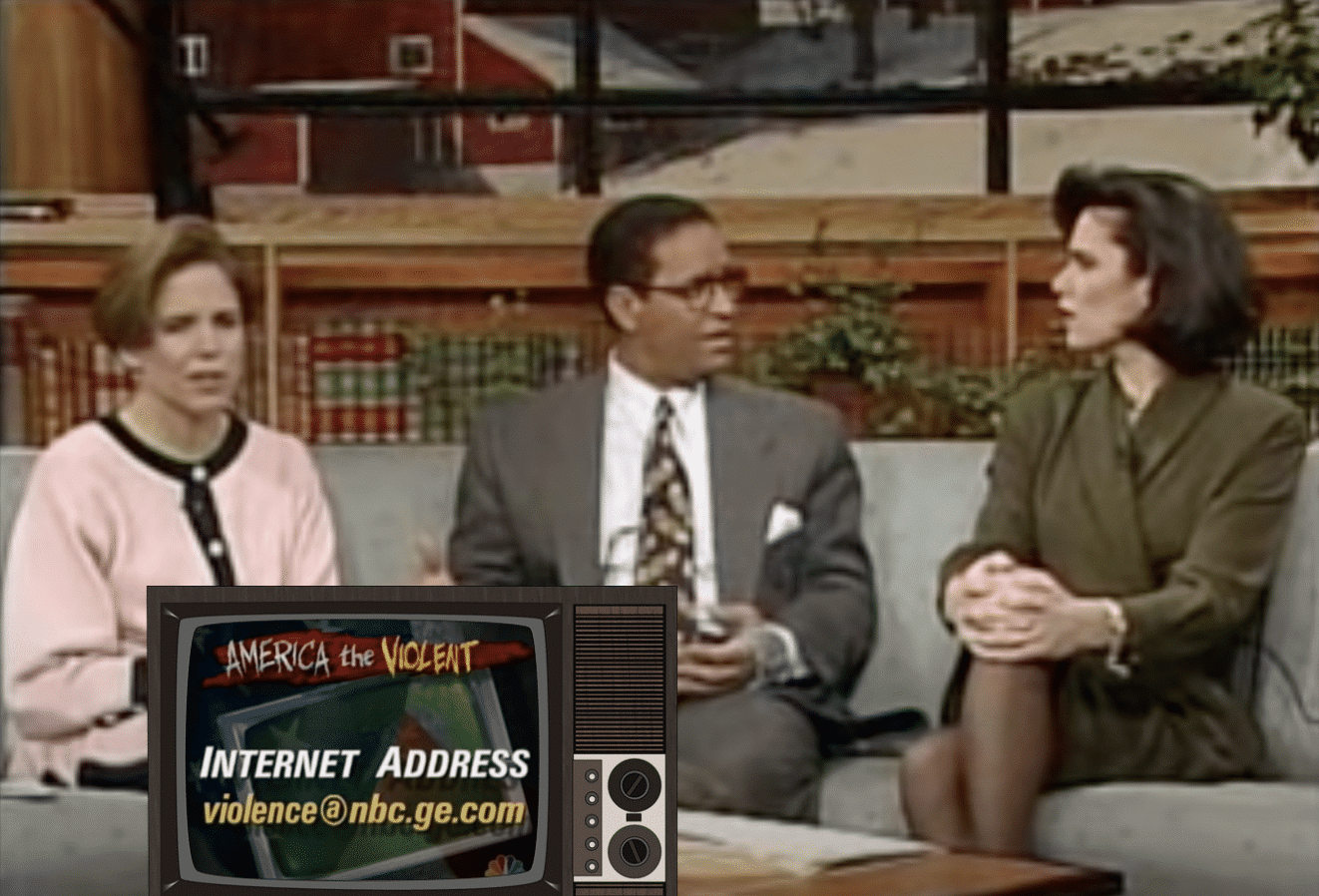
Today Show - 1994 : "What is the Internet, Anyway?", Chrissy Miklacic, Youtube.
Buy your first crypto easily in euro with Galeon
This example is quite convincing and demonstrates perfectly the stakes of the time we live in.
Every day, new innovations surface and it is sometimes complex to master all the subjects. Especially at this speed.
Have you ever started a discussion about blockchain, crypto-currency or nft, only to see your interlocutor immediately flee the conversation?
At Galeon, we explain how blockchain can be used for the healthcare.
Technological developments are moving at such a speed that we sometimes find it hard to keep up. But why not try to understand?
The origins of the Internet: the HTTP protocol and Web1
We can't approach this subject without mentioning the name of the British computer scientist Tim Berners-Lee. The latter and his team helped invent the famous concept of the World Wide Web (www).
At the beginning, there was the Web1, genesis of the virtual world that surrounds us.
The aim? To allow companies and other service providers to broadcast information on their own server to users.
From then on, the diffusion is one-way, so there is no possible interaction. It is broadcasted on showcase, institutional and other sites.
This period could be situated approximately between 1990 and 2004, years during which the connections to the web pages develop with in particular the creation of the HTTP protocol and the famous www.
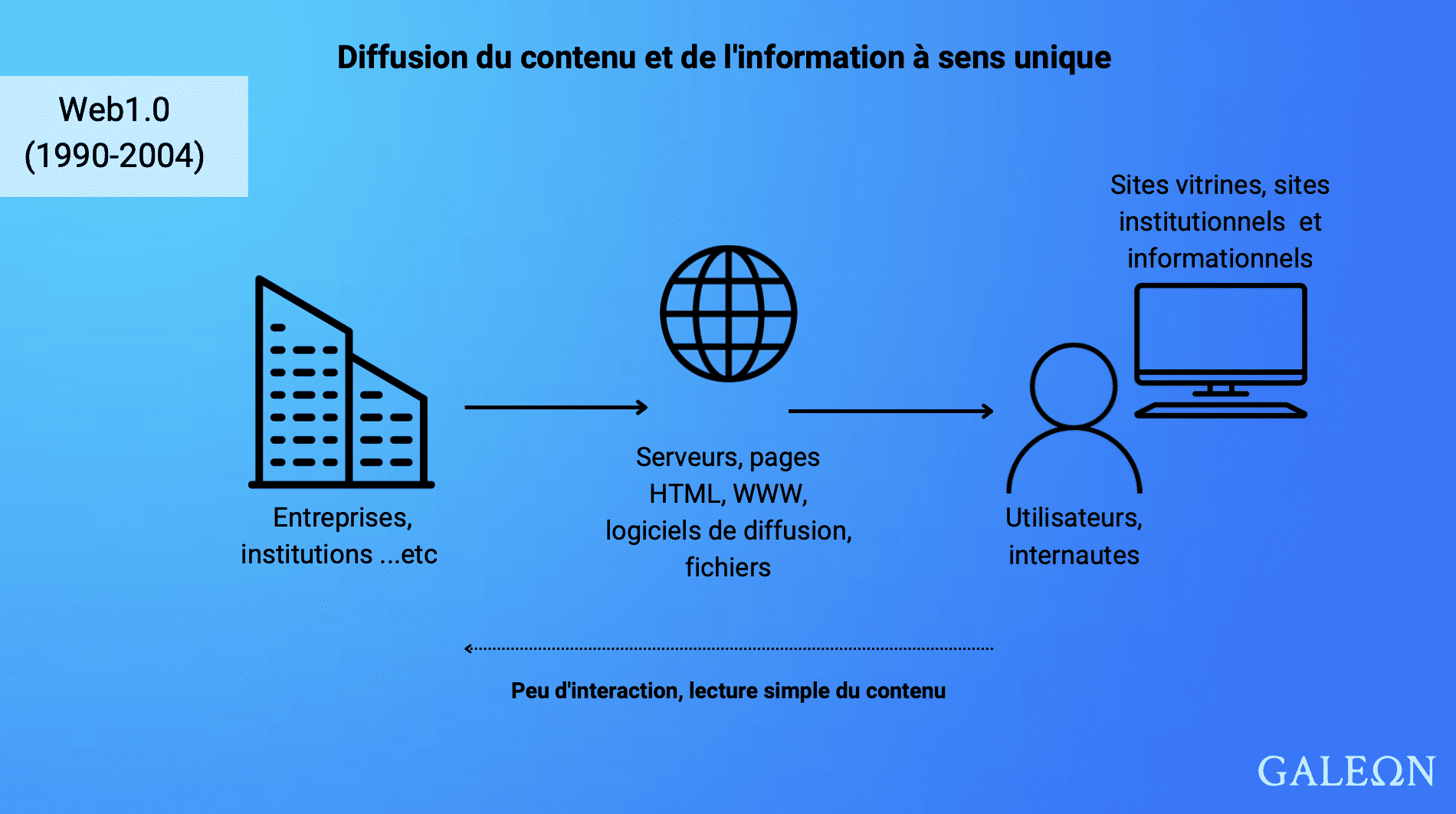
Web 2, an ultra-connected internet and social networks
Generation Y grew up with the first blogs, forums, skyblogs or Myspace.
This is the time of the first posts and comments with which users will finally be able to interact with the information broadcasted.
Welcome to the collaborative Internet. The basic concept which was simply for the Internet users to receive the information takes another turn, because from now on, there is the network.
With this incredible tool, the average visitor can finally express himself with the possibility of broadcasting his own contents: publication, blog, post, videos, music.
From 2004 until today, the Internet will be flooded with all kinds of information and data, to the great pleasure of companies.
Because yes, over the years, all these clicks, all these interactions have become a real gold mine for companies. A new business will develop around data and advertising.
We have gradually become the products of the Internet. A simple example is influencer marketing:
- Influencers are used to promote products and services,
- Their followers buy the sponsored products and entrust, indirectly or not, a certain amount of information about them and their habits.
This raises the question of the control of our virtual identity. Of course, governments are putting in place solutions such as the RGPD (General Data Protection Regulation), nevertheless, its application remains complex, especially on a European and international scale.
Some people in the community will want to change things by pushing the Internet towards a new concept that aims to redistribute power to users: Web3.
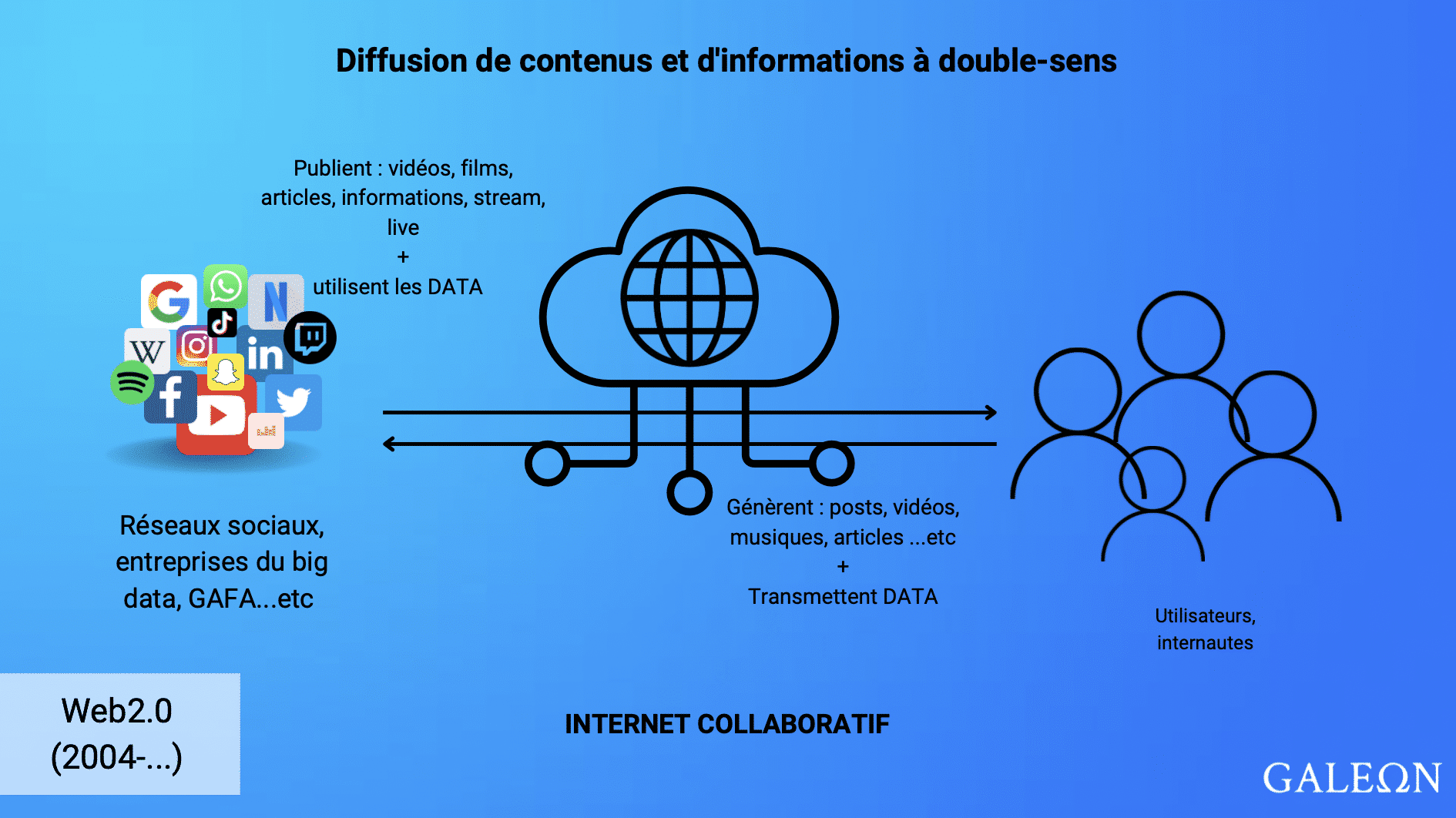
What changes for Web3?
Transforming services for a fairer Internet
The evolution towards a new Internet has already started. At the enterprise level, however, it will take another ten years for Web3 to replace Web2.
This mutation is general and will affect all the Web tools with the objective of building a fairer, more collaborative and secure environment.
Here are some examples of the changes brought about by Web3:
The network architecture is no longer based on a classic architecture (from client to server), largely controlled by companies. It is based on Peer-to-Peer (P2P) and allows users to regain ownership of their personal data by becoming servers in turn. In other words, there is no central authority.
The governance of the Web is in the hands of organizations that take the form of DAOs (decentralized autonomous organizations). It is thus the direct participation of the users. The power no longer belongs to the giants of Big Data.
The system is not financed by central banks and other institutions. It is the smart contracts and the blockchain that take over. Thus, there is no intermediary to pay.
On the use of personal data, users become owners again and can decide to monetize them or not.
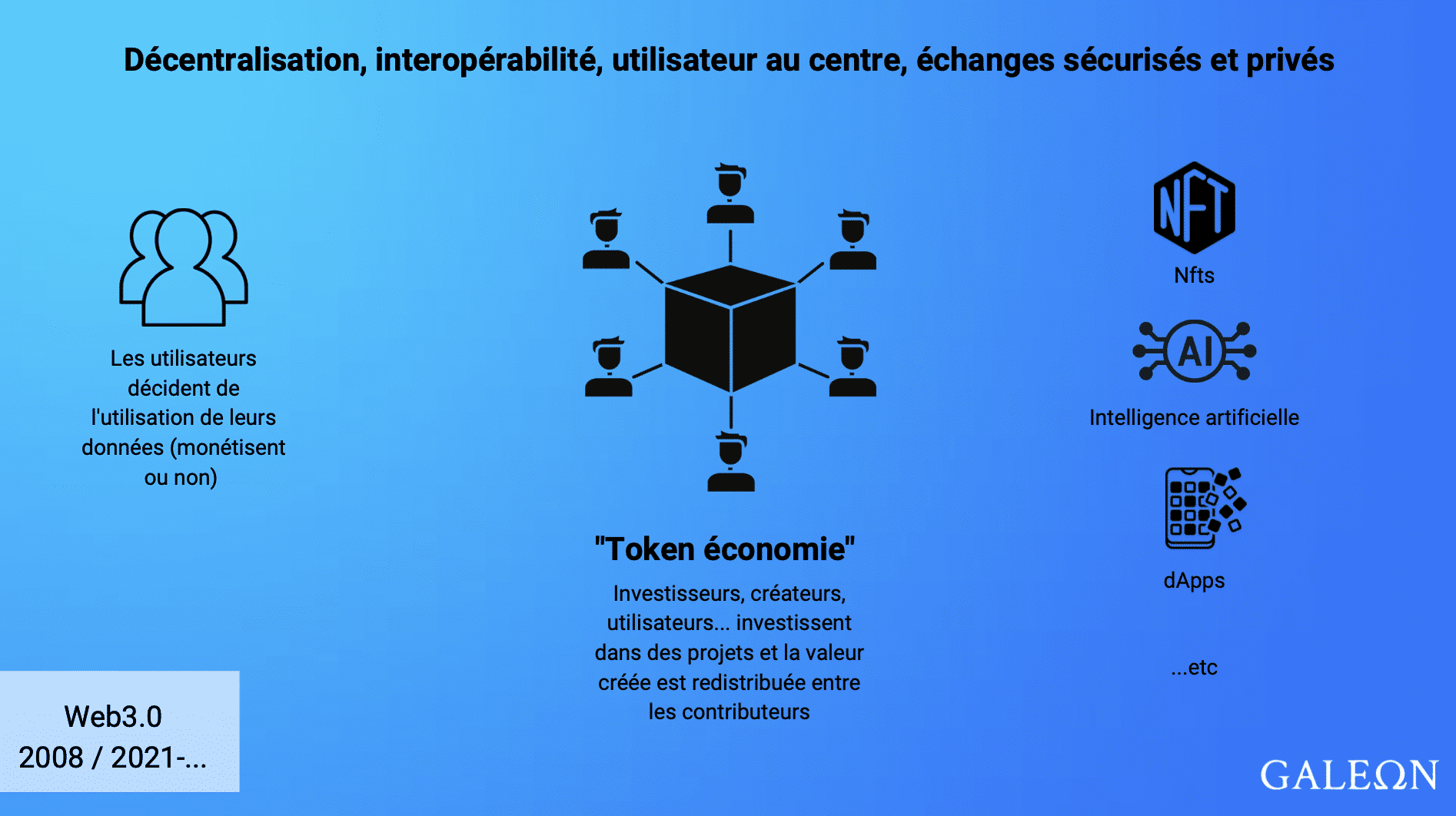
A "better" Internet?
Web3 raises a number of questions that are always interesting to ask.
First, there is the one related to our personal data and our digital identity.
If some people are not more concerned about this, others consider that consent should be given a real value. In this sense, a fairer Internet would be a place where the user's choice would have a real impact.
Then there is the question of freedom of access. Many governments and other institutions still restrict or even prevent the free use of the Internet.
And then, there is still the question of our contribution in this whole construction, by allowing users to choose and participate in certain projects, notably thanks to crypto-currency.
We speak of Token economy to designate this new organization in which investors, contributors, creators, users... in short, all entities and people who invest in a project, are rewarded with crypto-currency.
Indeed, Web3 is built in the form of DAO. Thus, each user can choose which project to invest in. In exchange for the investments, he gets tokens (crypto).
For this system to work, it is necessary that everyone adopts a behavior in accordance with the established values.
How to invest in Web 3?
Non-exhaustive list
The possibilities are numerous. Just remember that you will be rewarded in tokens.
Small precision, there are many, many, many crypto-currencies in circulation (+10.000).
Here is a non-exhaustive list of services you can invest in:
dApps or decentralized applications (e.g. Uniswap, Audius, Brave)
blockchains allowing the creation of dApps (e.g. Solana, Cardano, Ethereum)
in file storage and decentralized cloud (e.g. Filecoin, Siacoin, Aleph or Akash)
blockchains that interact with each other (e.g. polkadot)
in streaming (e.g. theta, AIOZ, Helium)
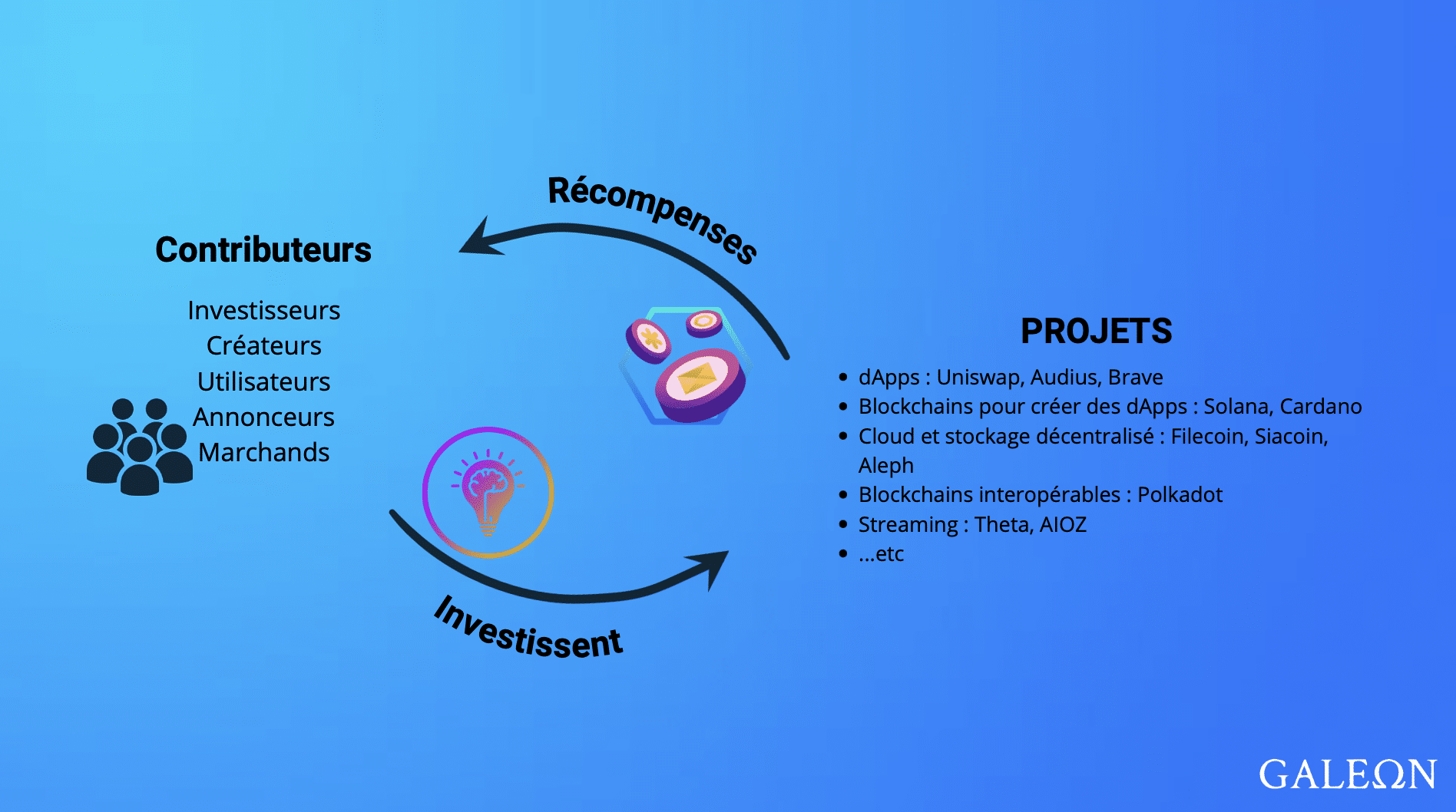
Investing in Galeon is investing in the healthcare of tomorrow
At Galeon, we are using blockchain to develop the patient record of the hospital of the future and to give patients the power over their data.
Several programs exist such as the 3-year staking program. In exchange, you become a Galeon token holder, and you participate in a "Good for Humanity" project. You now know what Web 3.0 is.
Any questions? Don't hesitate to ask them in comments, share, and like this article.
The purpose of this article is above all to simplify technical concepts related to crypto-currency, in order to make them accessible to everyone. These words engage only their author. It is not intended to advise the reader on his/her investments.
Vous souhaitez acheter votre 1ère cryptomonnaie facilement ?
Investissez dans la crypto Galeon par carte bancaire


